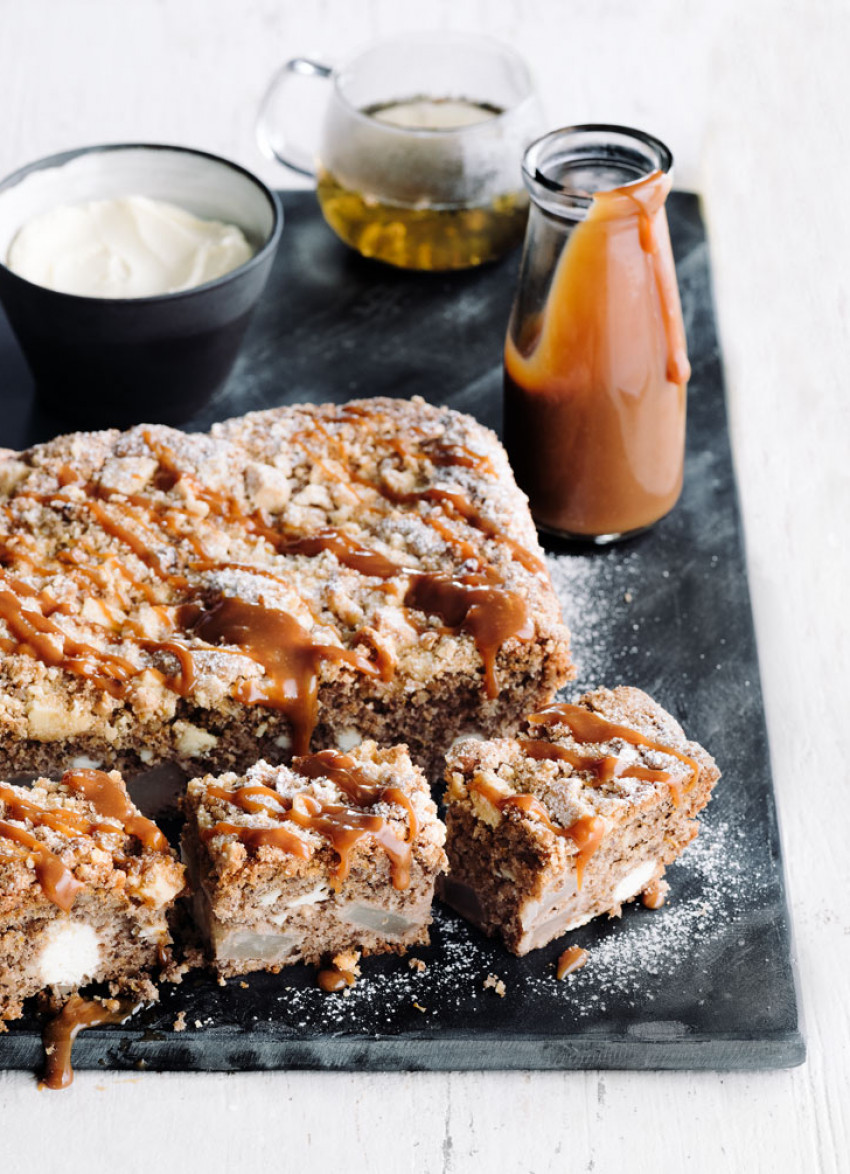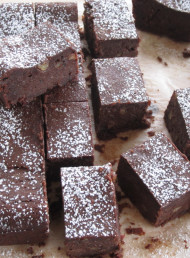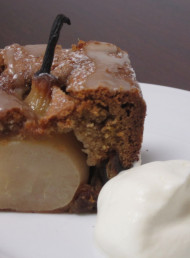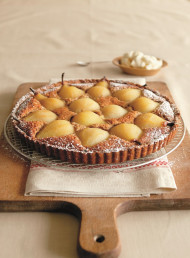Three ingredients that are a perfect match – juicy pears, creamy ricotta and toasty walnuts. I’ve drizzled a purchased dulce de leche over the top and served it with mascarpone for even more deliciousness.
INGREDIENTS
Cake
4 large eggs, size 7
¾ cup golden caster sugar
1 teaspoon vanilla extract
finely grated zest ½ orange
⅓ cup grapeseed oil
1 cup walnut pieces, finely ground
½ cup buckwheat flour
½ cup gluten-free plain flour
1 teaspoon baking powder
1 teaspoon each ground cardamom, ginger and cinnamon
2 firm but ripe pears, peeled, cored and diced (2 cups)
200 grams firm ricotta
Crumble
100 grams gluten-free shortbread, roughly crumbled
3 tablespoons walnut pieces, roughly chopped
2 tablespoons brown sugar
METHOD
Grease a 20cm square cake tin and fully line with baking paper, bringing the paper 2cm up above the rim.
Preheat the oven to 160°C.
Crumble: Combine everything in a bowl and set aside.
Cake: Beat the eggs, sugar, vanilla and orange zest together until pale and fluffy. Gradually beat in the oil.
Combine the walnuts, both flours, baking powder and all the spices in a bowl and add the pears, tossing so each piece is coated in flour.
Tip onto the beaten eggs and use a large metal spoon to gently but thoroughly fold through, ensuring there are no pockets of flour in the batter.
Crumble over the ricotta, leaving it quite chunky, and fold in.
Tip into the cake tin and spread evenly.
Scatter the crumble over the top and bake for 40 minutes. Cover the top of the cake loosely with foil if it’s quite golden brown and bake for a further 20 minutes or until a skewer inserted into the centre comes out clean.
To serve: Cool completely before removing from the tin. Dust with icing sugar and serve with mascarpone and dulce de leche if desired. Makes 1 cake
Cook’s note: Buckwheat is the fruit of a plant related to rhubarb and sorrel and despite its name contains no gluten. It’s used to make Japanese soba noodles, blinis and crepes. With a rich, nutty, slightly earthy flavour, when used in baking it’s best combined with a regular gluten-free flour.
Keep up to date with
dish weekly recipes,
food news, and events.
latest issue:
Issue #120
As the days become shorter, and the nights cooler, the latest issue is perfectly timed to deliver delicious autumn dishes. From recipes using fresh seasonal produce such as feijoas and apples, to spectacular soothing soups and super-quick after-work meals in our Food Fast section, we’ve got you covered. With Easter on the horizon, we feature recipes that will see you through breakfast, lunch and dinner over a leisurely weekend holiday, and whip up chocolatey baking treats sure to please. We round up delicious dinners for two and showcase a hot new Korean cookbook before heading south to Dunedin to check out all that’s new in food and dining.The latest issue of dish is on sale NOW at all good bookstores and supermarkets – don’t miss it!







